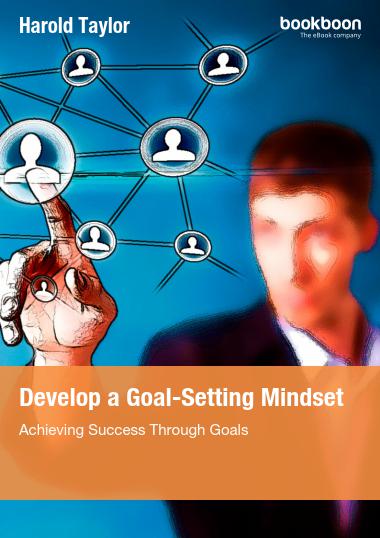The History of Time Management Dates Back to the Late 1800s
People have always searched for better and more efficient ways of doing things, whether it involved a more effective way of trapping animals for food or a more efficient way of starting a fire with friction. But it wasn’t until the later 1800s and early 1900s that anyone took a purposeful, scientific approach to getting things done faster with less effort. Frederick Winslow Taylor is normally considered to be the father of scientific management. He wrote his book, The Principles of Scientific Management in 1911, which, together with the work of Frank and Lillian Gilbreth, became the launching pad for today’s time management. It started as a quest to increase productivity in manufacturing, focused on the efficiency of individual workers, quickly spread to the office, and eventually encompassed the home environment as well. Taylor sought a one best way to do every job, standardizing work methods and tools in order to increase productivity.
Taylorism, as it was called, began to change the way organizations functioned. Before this time, organizations were usually set up in homes or informal businesses where the workspaces were open. There were no barriers to communication and ideas could flow freely among employees. Instead, manufacturing areas and offices were separated, work became specialized, procedures became fixed and efficiency increased. Unfortunately communications decreased. Temporarily at least, human relations took a back seat to productivity. This was not Taylor’s intention. He was trying to make it easier for the employee as well as have them increase productivity. Although he didn’t coin the “work smarter, not harder phrase”, this was his intention.
Frank and Lillian Gilbreth also had an impact by introducing time and motion study to the manufacturing process. The Gilbreths had twelve children and the movie Cheaper by the Dozen was based on their lives. They demonstrated that the same principles being applied in business could be adapted to the home. Their work gave rise to industrial engineering, time studies, and incentive standards, and a continuous pursuit of efficiency, not only in the plants but in the offices as well.
Early time management books and pioneers
When I entered management ranks in the 50s, Lillian Gilbreth was still alive and on the speaking circuit. She spoke to our Canadian Industrial Management Association at one of our dinner meetings – so that gives you an idea of how old I must be! While I was Quality Control Supervisor at the time, I shared an office with the plant industrial engineers who organized the work stations and set standards for the pace of work.
The earlier time management books reflected the work of these pioneers, Taylor, Gilbreth, Gantt and others. I have accumulated over 900 books on time management over the years. A few date back to the 1940s. One of the earlier books consisted almost entirely of how to do common everyday things faster, illustrating how you could shave hours off your week, and thereby add two years to your life. This obsession with saving time could actually have the reverse effect, decreasing your lifespan. The best way to add two years to your life is to live two years longer. And this entails not doing things faster, but living a healthier lifestyle, free from excessive stress.

Many of today’s time management books still emphasize efficiency and increased productivity with little emphasis on effectiveness and life balance. But more and more books are now taking a more holistic approach and include stress management, life balance, simplification and a greater emphasis on working smarter. When I used to tell people I was a time management specialist they would say, “Oh, an efficiency expert”.
Efficiency experts had a bad reputation. They weren’t well-liked because whenever they came into a company it usually resulted in people being laid off as jobs were simplified, combined or eliminated. Spencer Tracy was an efficiency expert in one of the old movies. I believe it was with Katherine Hepburn.
What this quest for efficiency did in most cases was alienate the workers. Human relationships took a back seat. People were in separate areas or offices, took timed coffee breaks and lunch hours at specific times, and in many cases punched a clock every time they came and went – to keep track of hours worked. Workers were disciplined for chatting too long at the water cooler or kidding around in the factory. Policies, procedures and rules were developed. They usually stifled employee interaction, discouraged creativity and generated greater union activity.
So the backlash, if I can call it that, was the human relations movement, where it was felt that a happy worker was a productive worker. We went from isolated offices to cubicles without doors, landscaped offices with movable partitions or no partitions, office parties and Christmas bonuses. A lot of time clocks were eliminated. Communication meetings were introduced and so on. Supervision changed from an authoritative or dictator style to a consultative or participative style. But that era, and the organizational development era that followed were motivated by the same desire to maximize employee productivity.
It’s ironic that the current digital era that we’re in now is once again dehumanizing the work environment, decreasing personal interaction, reducing our creativity, and in some ways putting us back into the scientific management era. But this time we are doing it willingly rather than having it imposed on us. And it’s mainly because we’re being seduced by technology.
Although time management had its start over a hundred years ago, the need for time management is greater than ever. As the pace of life increases, the perception of time changes. A decade seems to pass in a few years. In an advanced time management program that I developed, I actually discuss the management of internal time, the perceived passage of time. I predict there will be a lot more research on internal time and how we can manage our brain and take advantage of our biological clock in order to manage our time – and our lives – more effectively.
Summary
The history of time management summed up:
In the early days of time management we became fixated on efficiency at the expense of human interaction. This eventually gave rise to more focus on human interactivity but with the same aim – efficiency and productivity. Our obsession with efficiency is somewhat misguided and as Harold points out in his teachings the real goal is effectiveness and balance.
Key points to take away:
- Frederick Winslow Taylor is normally considered to be the father of scientific management. He wrote his book, The Principles of Scientific Management in 1911, which, together with the work of Frank and Lillian Gilbreth, became the launching pad for today’s time management.
- Although he didn’t coin the “work smarter, not harder phrase”, this was his intention.
- Frank and Lillian Gilbreth’s work gave rise to industrial engineering, time studies, and incentive standards, and a continuous pursuit of efficiency, not only in the plants but in the offices as well.
- Many of today’s time management books still emphasize efficiency and increased productivity with little emphasis on effectiveness and life balance.
- Although there was a “human relations movement” as a backlash to our obsession with efficiency we have since moved into a digital era where technology is the new “oppressor”.
- Harold Taylor predicts there will be a movement towards research on internal time and how we can manage our brains and take advantage of our biological clock in order to manage our time
Successful People Read. A Lot.
What do Warren Buffett, Mark Zuckerberg, Elon Musk and Oprah Winfrey have in common? They all read - a LOT! If you want to be successful you need to read. We have over 30 short ebooks designed to get you booked up fast!


